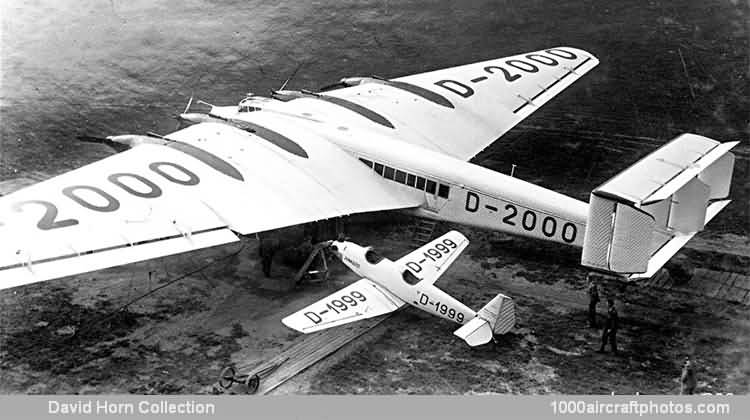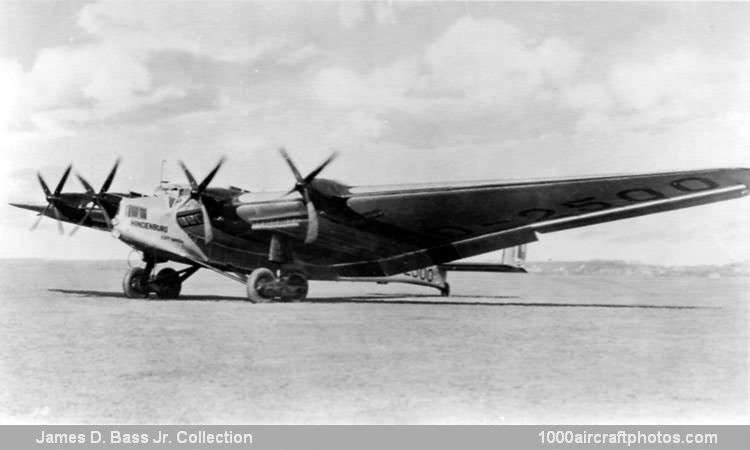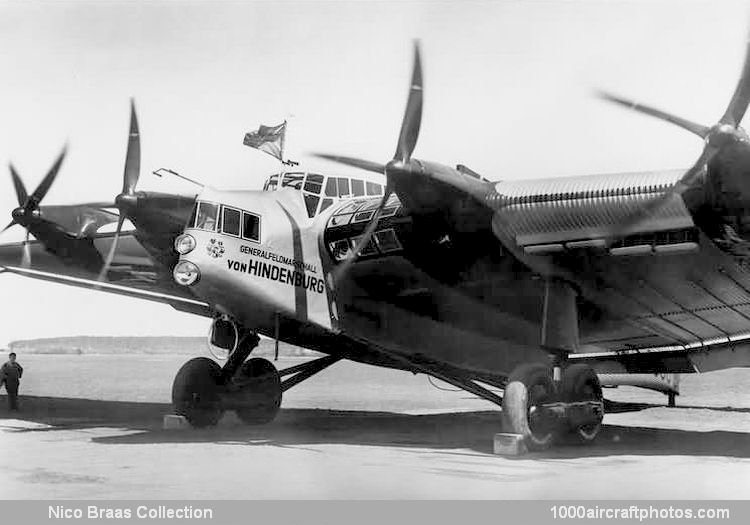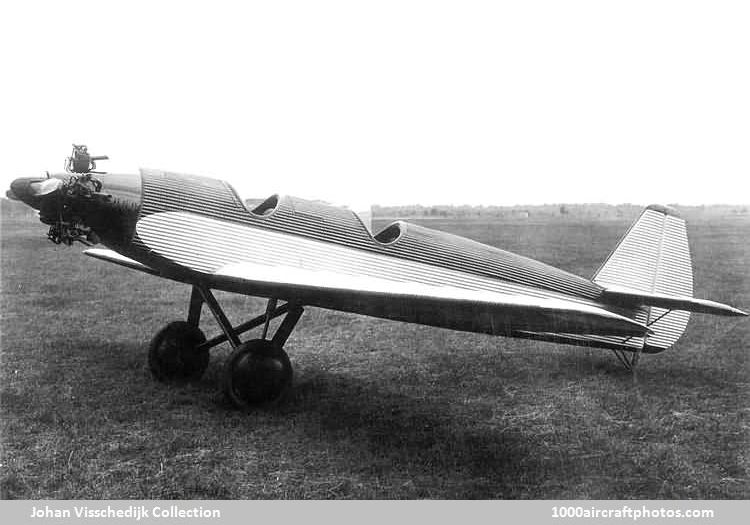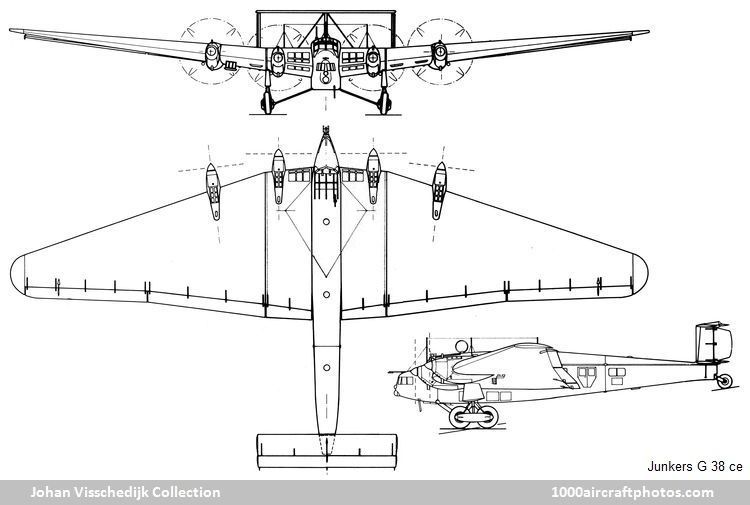06/30/2011. Remarks by
Johan Visschedijk: "The Junkers Flugzeugwerke A.G. of Dessau, Germany, began work on the all-metal G 38 in 1928. This was essentially a large flying wing with a chord of 32 ft 10 in (10 m) and a thickness of about 5 ft 7 in (1.7 m), accommodating seating for four passengers, fuel and engines, stabilized to the rear by biplane horizontal and triple vertical tail surfaces on a short fuselage, while the section of the fuselage between the wings housed 26 passengers.
The G 38 was also notable for its use of the important slotted ailerons (or 'double wing') characteristic of most Junkers aircraft for the next ten years, and first tested on the T 29 trainer of 1925. The use of the combined flaps and ailerons kept the G 38's landing speed down to a remarkable 48 mph (78 kmh). Although the tandem wheel main landing gear units were at first spatted, the fairings were subsequently removed.
Powered by two 400 hp Junkers L 8 six-cylinder water cooled in-line engines outboard and two 600-hp Junkers L 55 twelve-cylinder water cooled V-engines inboard, the G 38 a was first flown by Chief pilot Wilhelm Zimmermann on November 6, 1929. Registered D-2000, the aircraft gained its
CofA on March 27, 1930 and was handed over to Deutsche Lufthansa in June 1930 for route-proving trials. The G 38 a was never used for regular commercial services, which were left to the only other G 38 built, the G 38 ce.
G 38 ce (D-2500) (
Nico Braas Memorial Collection)
The G 38 ce was first flown on June 14, 1932, and registered D-2500 it was subsequently handed over to Deutsche Lufthansa. It featured several modifications compared with the G 38 a, the slotted ailerons covered the entire trailing edge, rather than the portion outboard of the engines; the fuselage was deeper, with increased accommodation thanks to the provision of a double-deck layout.
In the extreme nose were two seats and on each side of the center section were three more seats, with windows let into the wing leading edges to provide a magnificent view. The G 38 a was later brought up to the same standard as the G 38 ce, these designations in fact being applied in 1932 when the first aircraft was re-engined with two 800 hp L 88 and two 800 hp L 88a twelve-cylinder water cooled V-engines, and the second with four L 88 a's.
In 1934 the G 38 a D-2000 was fitted with four 750 hp Junkers Jumo 204 six-cylinder liquid-cooled in-line diesel engines, and redesignated G 38 di, it was reregistered G-AZUR and returned to Deutsche Lufthansa. In 1936 the aircraft was serviced at the Junkers factory, and due to a control installation error it crashed during the following check flight on May 26, and was destroyed.
In 1935 the G 38 ce D-2500 was also fitted with the Jumo 204 power plant, and redesignated G 38 fi. Reregistered D-APIS it served with Deutsche Lufthansa till 1939, with the outbreak of WW II, the aircraft was enlisted in the Luftwaffe and coded
"GF+GG" it served with KGrzbV in Norway and in the Balkan. It was destroyed in a RAF air raid air the Tatoi airfield of Athens, Greece, on May 17, 1941.
A 50 ci Junior (D-1999) (
Johan Visschedijk Collection)
Registered D-1999, the A 50 Junior sports aircraft was sold to E.Bohm and F.Haack of Cottbus, Brandenburg, in March 1931. In July 1934 it was sold to the
DLV and reregistered D-ENIM."
